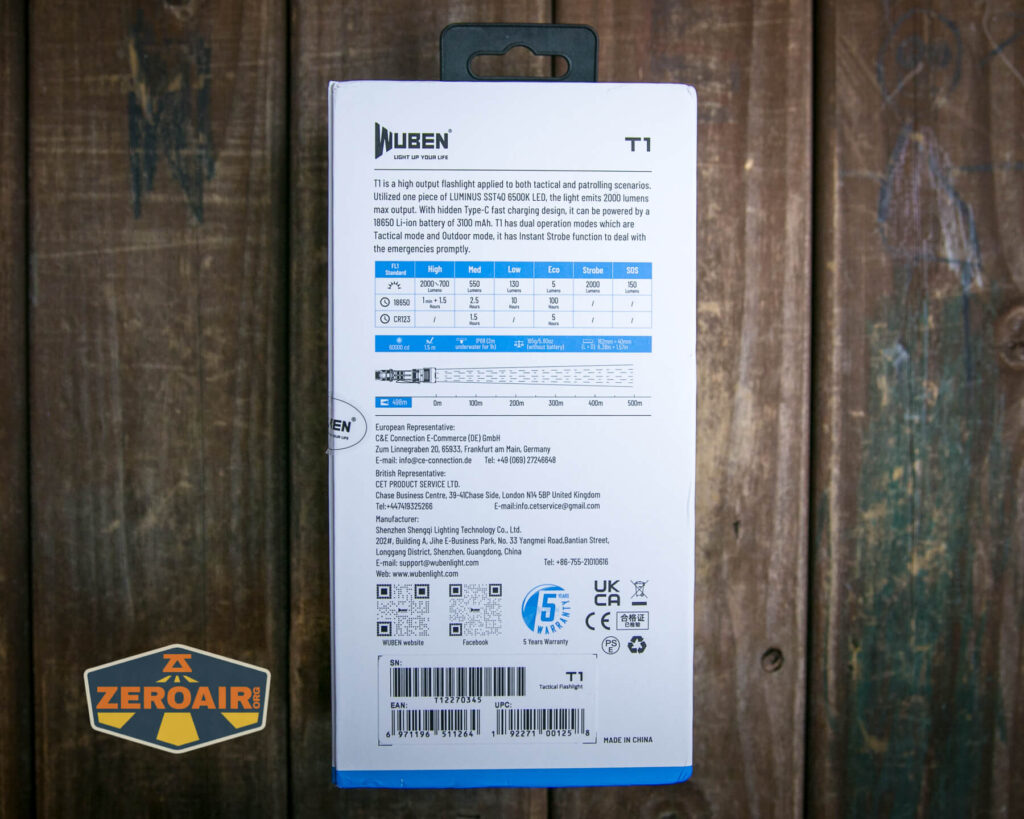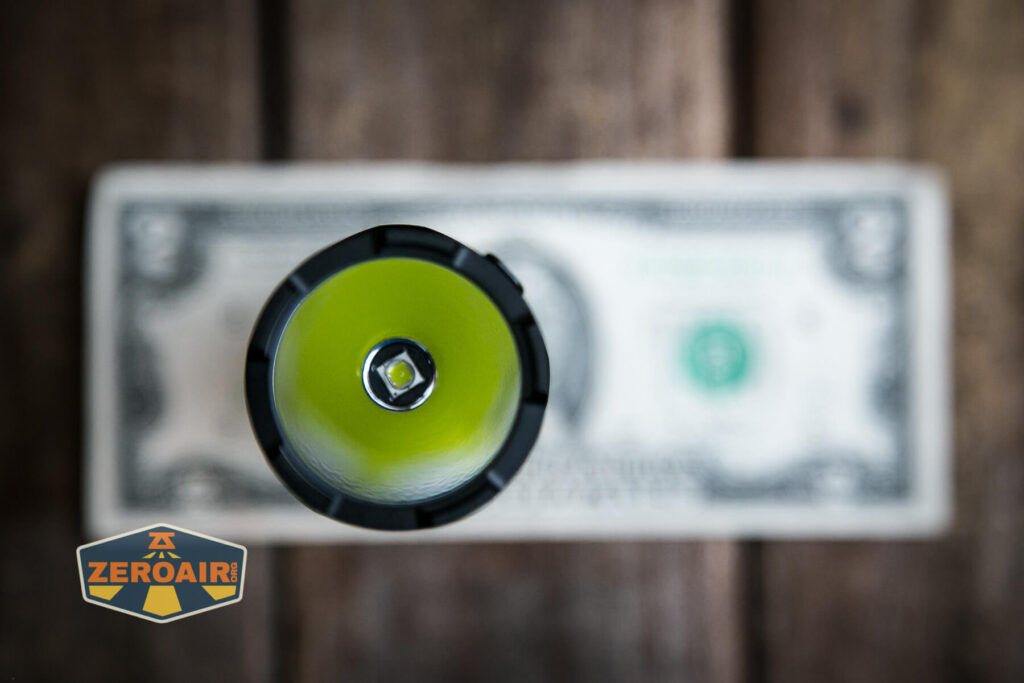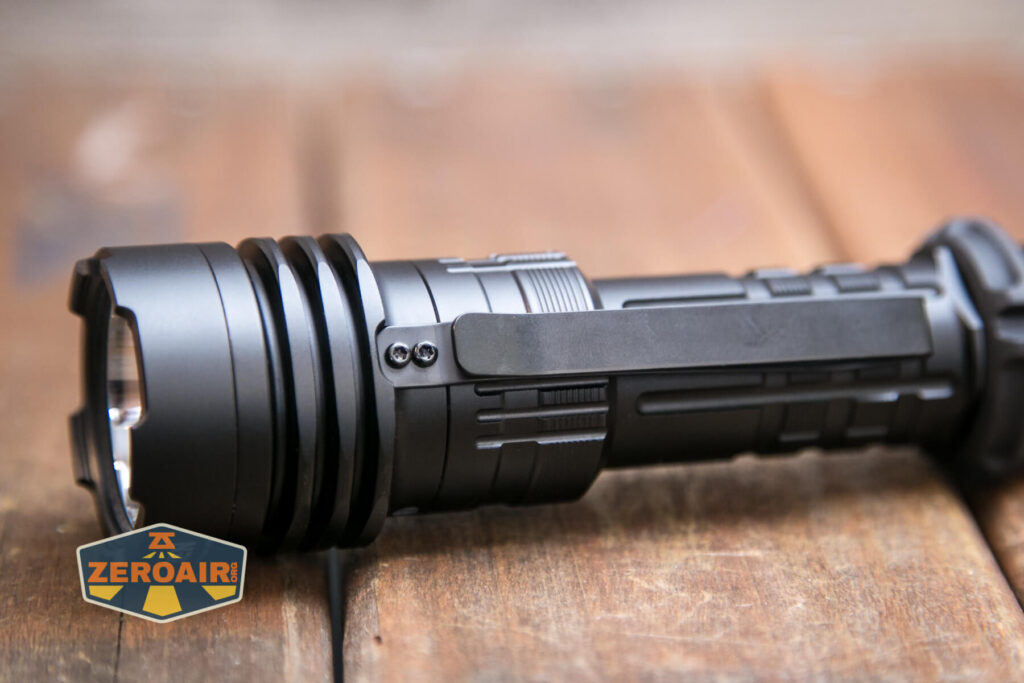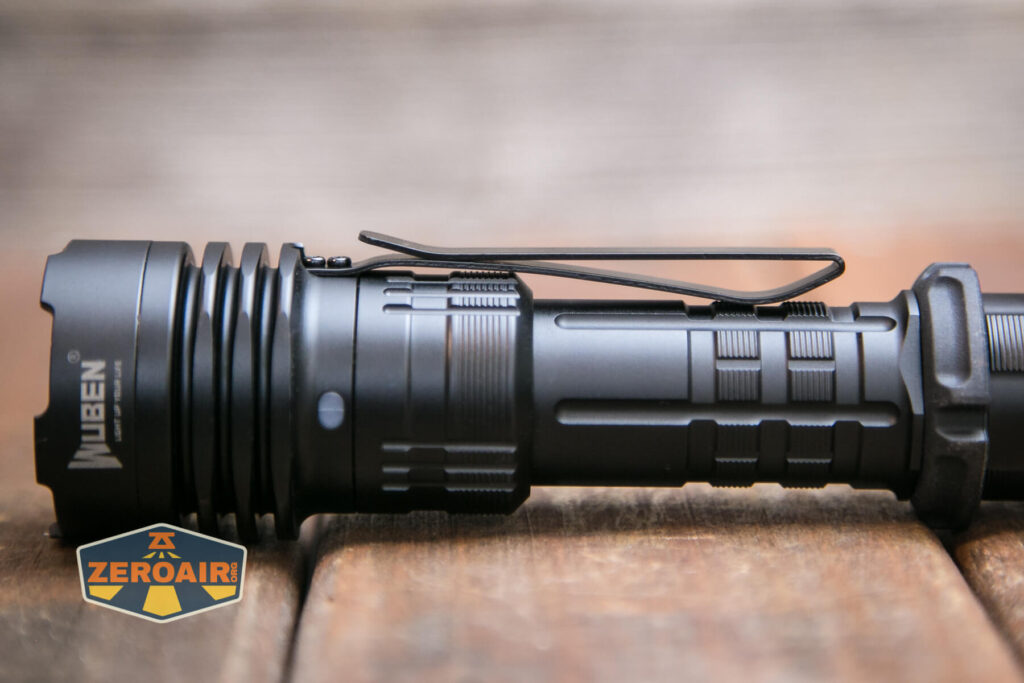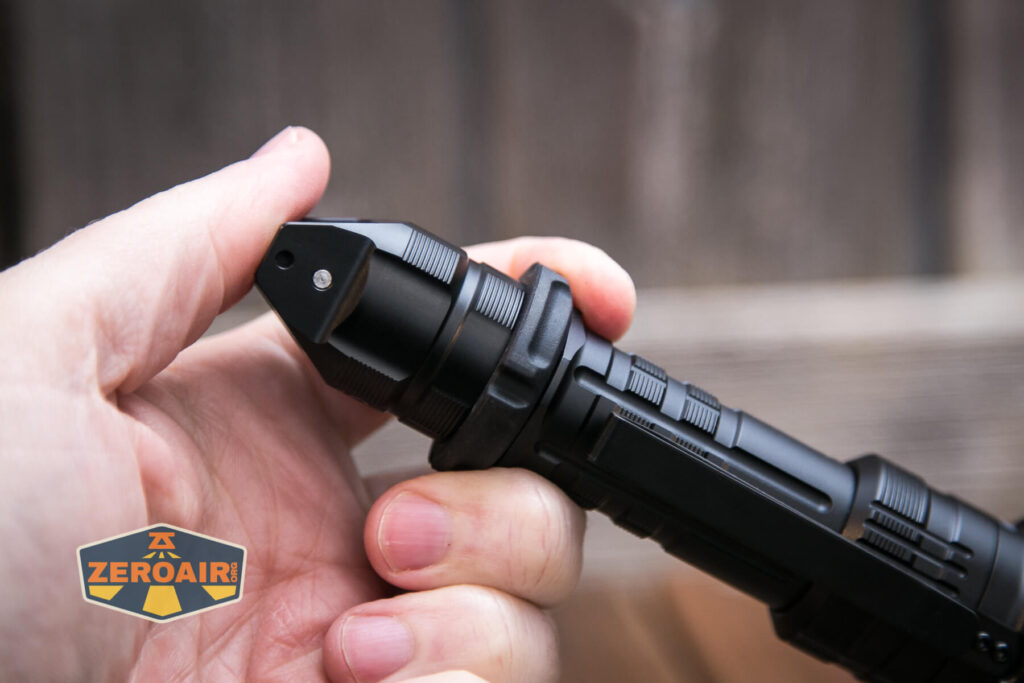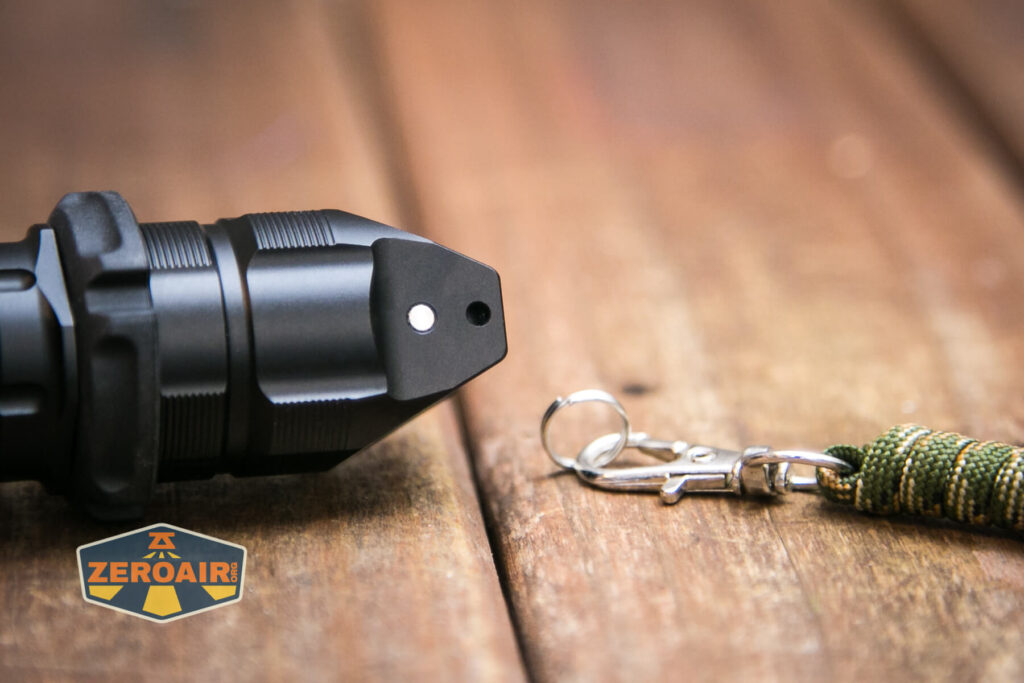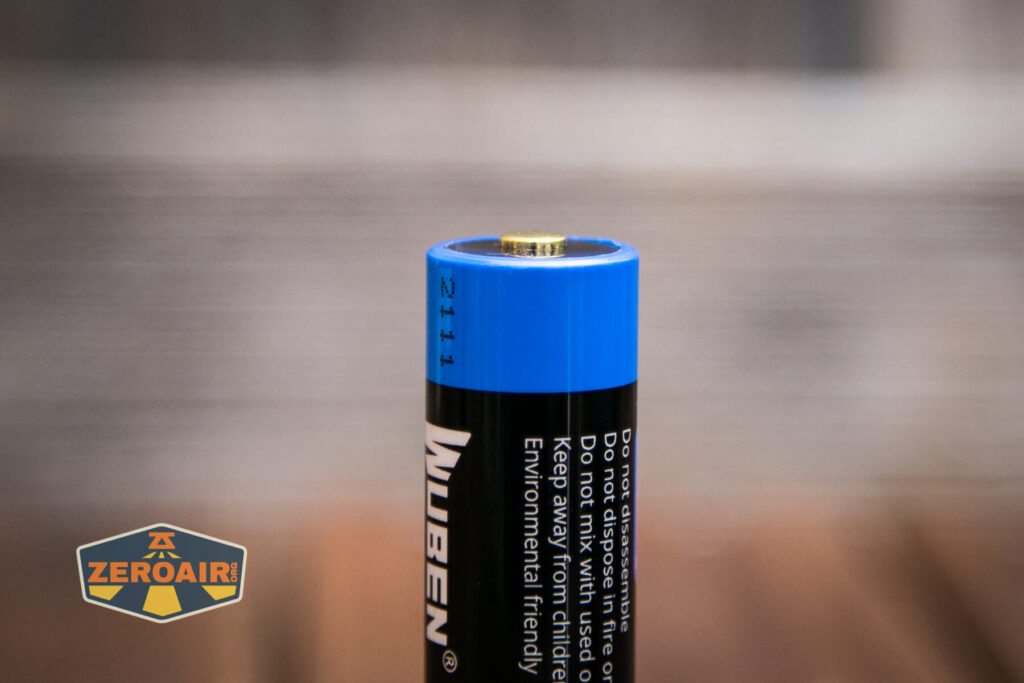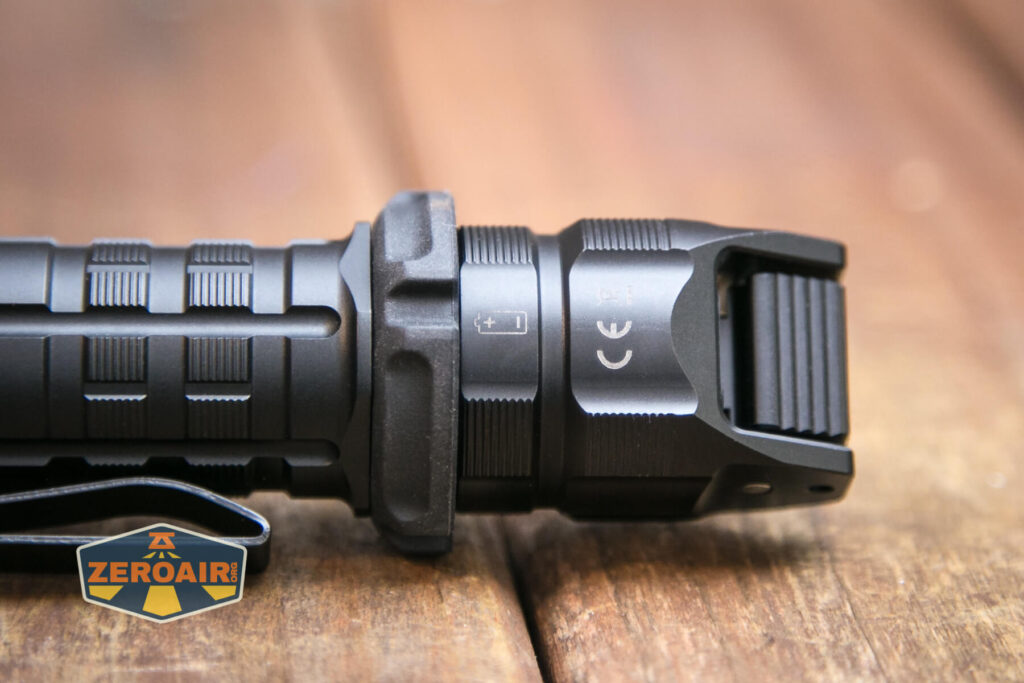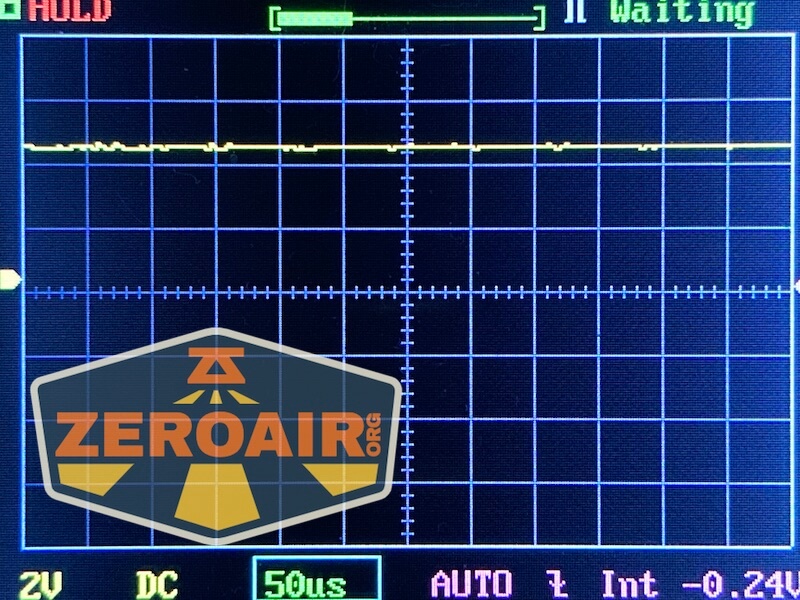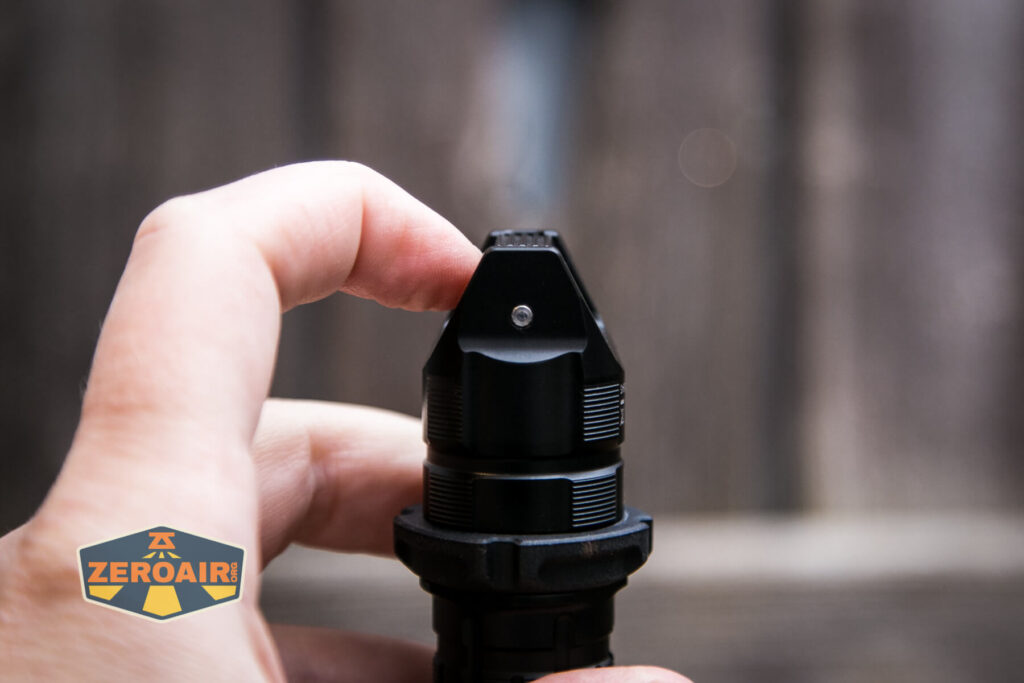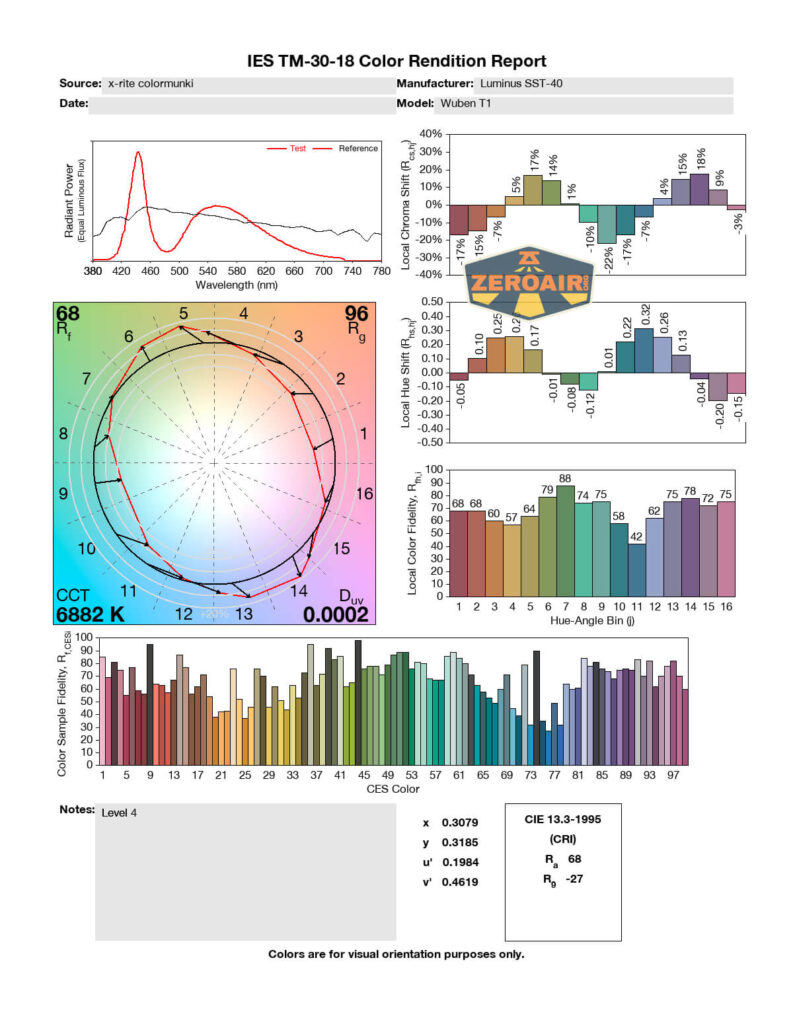Wuben T1 Tactical Flashlight Review
The Wuben T1 is a new tactical flashlight with a unique switch. While it’s a tail clicky, it also has a leverage feature for mode changes.
Official Specs and Features
Here’s a link to the Wuben T1 Tactical flashlight product page.
Versions
There is just one version.
Price
The Wuben T1 Tactical flashlight lists for $89.99, but use this coupon for 20%!
zeroair20
Short Review
The Wuben T1 is a solid tactical flashlight. The new switch type is quite interesting and seems to work nicely from an EDC user standpoint, though I have not used it on or with a weapon. USB-C charging works fine, though the port is a little tedious to access. All in all, this is a solid light.
Long Review
The Big Table
| Wuben T1 Tactical Flashlight | |
|---|---|
| Emitter: | Luminus SST-40 |
| Price in USD at publication time: | $71.99
Here’s a 20% off coupon, too: |
| Cell: | 1×18650 |
| High Runtime Graph | Medium Runtime Graph |
| LVP? | Yes |
| Switch Type: | E-Switch |
| Quiescent Current (mA): | – |
| On-Board Charging? | Yes |
| Charge Port Type: | USB-C |
| Charge Graph | |
| Power off Charge Port | with cell: lowest 3 modes without cell: no modes |
| Claimed Lumens (lm) | 2000 |
| Measured Lumens (at 30s) | 1806 (90.3% of claim)^ |
| Candela per Lumen | 49.4 |
| Claimed Throw (m) | 498 |
| Candela (Calculated) in cd (at 30s) | 2150lux @ 6.048m = 78643cd |
| Throw (Calculated) (m) | 560.9 (112.6% of claim)^ |
| Claimed CCT | 6500 |
| Measured CCT Range (K) | 5600-6900 Kelvin |
| Item provided for review by: | Wuben |
| All my Wuben reviews! | |
^ Measurement disclaimer: Testing flashlights is my hobby. I use hobbyist-level equipment for testing, including some I made myself. Try not to get buried in the details of manufacturer specifications versus measurements recorded here; A certain amount of difference (say, 10 or 15%) is perfectly reasonable.
What’s Included
- Wuben T1 Tactical flashlight
- Wuben 3100mAh 18650
- Spare o-rings (2)
- Charging cable (USB to USB-C)
- Lanyard
- Manual
Package and Manual
Build Quality and Disassembly
Overall I’d call the build quality of the T1 to be “robust” and I have little doubt it’ll be good for weapon-related needs.
The new “unique lever tail switch” is quite interesting. We’ve definitely seen things like it but this might in fact be unique.
Only the tailcap can be removed, and this reveals unanodized threads.
That brass button in the tailcap is actually a springy button, and though not pictured, there’s a spring on the head end as well. Both are things you’d want in a tactical weapon.
Size and Comps
Length: 162mm
Diameter: 40mm
Weight: 165g, or 215g with battery
If the flashlight will headstand, I’ll show it here (usually the third photo). If the flashlight will tailstand, I’ll show that here, too (usually the fourth photo).
Here’s the test light with the venerable Convoy S2+. Mine’s a custom “baked” edition Nichia 219b triple. A very nice 18650 light.
And here’s the light beside my custom engraved TorchLAB BOSS 35, an 18350 light. I reviewed the aluminum version of that light in both 35 and 70 formats.
Retention and Carry
A pocket clip is included and already attached on the T1. This pocket clip is held in place by two screws.
The clip is a two-way clip and neither way provides very deep carry.
Next up is the tactical ring. This is a soft collar ring that ships already attached. This ring is easily removable; just remove the tailcap and this ring will slide off.
Last is the included lanyard. It seems one should attach this tiny split ring to a hole in the tail end (seen below) and the metal bit clips to this split ring. It might also be possible to clip the metal clip (without the spit ring) to the tailcap but that’ll be cumbersome and not something you’ll do quickly or on the fly.
Power and Runtime
Wuben provides a single 18650 for running the Wuben T1 Tactical flashlight. This is the ABE3100C.
The cell fits into the Wuben T1 tactical flashlight in the usual way: positive terminal toward the head.
In case you forget this orientation, there’s a silk-screened icon reminder.
Here are a few runtime tests.
For around 5 seconds after turning the T1 on, the indicator around the charge port will indicate the cell power level, as follows:
Blue: >90%
Blue blinking: 40-90%
Red: 15-40%
Red blinking: 0-15% (and in this power level, the red will say on continually, not just 5 seconds).
Charging
The T1 does have built-in charging. This is by way of a USB-C port in the head. The means to reveal the charging port is somewhat unusual – there’s a collar that screws over the charge port.
Above the charge port itself is a charging indicator light.
Wuben includes the necessary cable for charging. It’s a USB to USB-C cable. Note where this threaded collar is in relation to the pocket clip. When unscrewing the collar for charging, this whole setup becomes a bit difficult. You need to intermittently grip around the collar all while avoiding the pocket clip. It’s easy enough, but it’s not like unscrewing a tailcap, for example.
Here’s a charge cycle.
While charging, the indicator just above the charging port is red. When charging is complete, this indicator turns blue.
C to C charging did not work with the sources I tested.
Modes and Currents
| Mode | Mode Claimed Output (lm) | Claimed Runtime | Measured Lumens | Tailcap Amps |
|---|---|---|---|---|
| HIgh | 2000-700 | 1m-1.5h | 1806 | ? |
| Medium | 550 | 2.5h | 68 | ? |
| Low | 130 | 10h | 116 | ? |
| Eco | 5 | 100h | ? |
Pulse Width Modulation
No PWM is seen on any mode.
Here you can see a “baseline” – a chart with almost no light hitting the sensor.
Then there’s the Ultrafire WF-602C flashlight, which has some of the worst PWM I’ve seen. It’s so bad that I used a post about it to explain PWM! Here are multiple timescales (10ms, 5ms, 2ms, 1ms, 0.5ms, 0.2ms) to make comparing this “worst” PWM light to the test light easier. That post also explains why I didn’t test the WF-602C at the usual 50us scale.
User Interface and Operation
A single switch controls the T1. It’s this tail switch, which feels in one part like a mechanical clicky, but in another part like an e-switch. I have to guess it’s fully e-switch, but I don’t know how to confirm it.
The first action on this switch is “down.” This is the part that feels mechanical.
Next is the lateral movement of the switch, which feels like an e-switch.
There are two mode groups. One is Tactical and the other is Outdoor. I’m fairly sure the light ships in “Tactical” but without doing it intentionally I have landed in Outdoor.
Here’s a user interface table for Outdoor Mode!
| State | Action | Result |
|---|---|---|
| Off | Tap Switch downward | Momentary of last used mode |
| Off | Click Switch downward | On in last used mode |
| On | Click Switch downward | Off |
| On | Push switch laterally | Mode advance (Eco-Low-Med-High) |
| On | Hold switch 2s laterally | On to Strobe |
| Off | Hold Switch laterally | Momentary in strobe |
| Strobe | Double-tap laterally | SOS |
| SOS | Push laterally | Exit SOS |
| Off | Tap Switch downward 5x (and hold down) | Iterate between Tactical (default) and Outdoor |
Here’s a user interface table for Tactical Mode!
| State | Action | Result |
|---|---|---|
| Off | Tap Switch downward | Momentary High |
| Off | Click Switch downward | High |
| On | Click Switch downward | Off |
| On | Push switch laterally | Mode advance (High-Low) |
| On | Hold switch 2s laterally | On to Strobe |
| Off | Hold Switch laterally | Momentary in strobe |
| Strobe | Double-tap laterally | SOS |
| SOS | Push laterally | Exit SOS |
| Off | Tap Switch downward 5x (and hold down) | Iterate between Tactical (default) and Outdoor |
The groups are really not that different, aside from the things you’d want in a Tactical mode that you wouldn’t in a daily style mode. The consistency between everything else in the modes is great, though.
LED and Beam
Wuben uses a Luminus SST-40 emitter in the T1. This emitter is surrounded by a deep smooth reflector.
The lens appears to have an AR coating, too.
These bezel crenelations are mildly sharp on the outside edge and would likely be great for striking. They’re definitely great for allowing light to escape while the light is headstanding.
LED Color Report (CRI and CCT)
Here’s a report on the CRI and CCT. CCT comes in between 5600 and 6800K. That’s quite a span but does demonstrate how hard the emitter is driven for the higher modes. (The harder an emitter is driven, the higher the CCT goes.) CRI is also fairly low, but that’s nothing to be surprised about on a tactical flashlight.
Beamshots
These beamshots always have the following settings: f8, ISO100, 0.3s shutter, and manual 5000K exposure. These photos are taken at floor level, and the beam hits the ceiling around 9 feet away.
Tint vs BLF-348 (KillzoneFlashlights.com 219b version) (affiliate link)
I keep the test flashlight on the left and the BLF-348 reference flashlight on the right.
I compare everything to the KillzoneFlashlights.com 219b BLF-348 because it’s inexpensive and has the best tint!
Conclusion
What I like
- Solid complete package
- USB-C Charging
- Two good user interfaces that are consistent in peripheral parts
- The lever-style switch is neat
- Very good throw
- Great beam profile for a tactical light
What I don’t like
- Charging cover collar is hard to unscrew
- CCT is very cool on the higher levels
- CRI is fairly low
Notes
- This content originally appeared at zeroair.org. Please visit there for the best experience!
- For flashlight-related patches, stickers, and gear, head over to PhotonPhreaks.com!
- Please use my amazon.com referral link to help support zeroair.org!
- Please support me on Patreon! I deeply appreciate your support!





